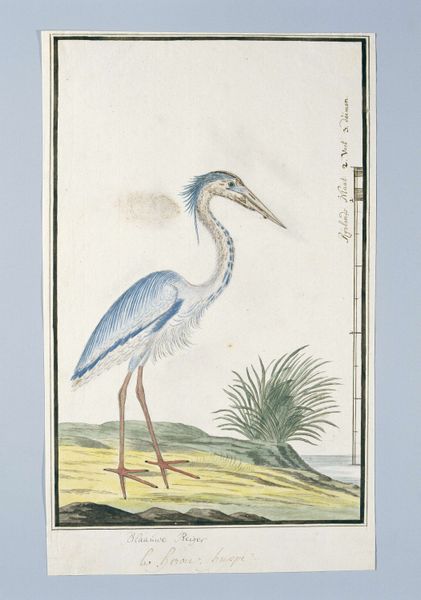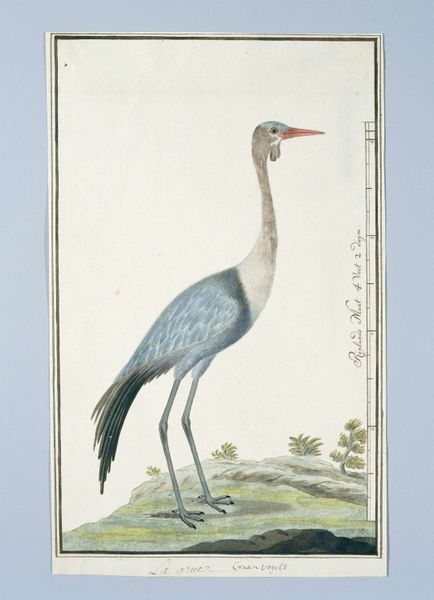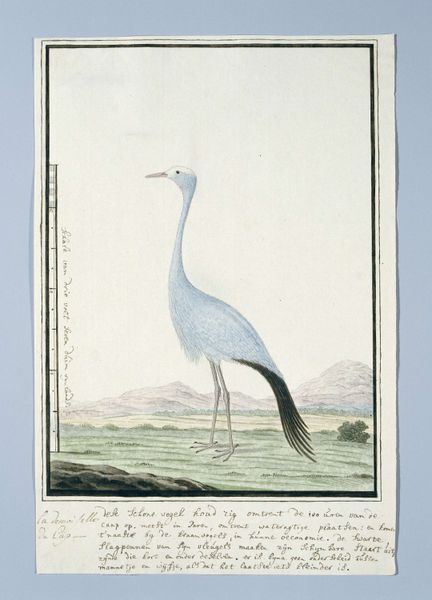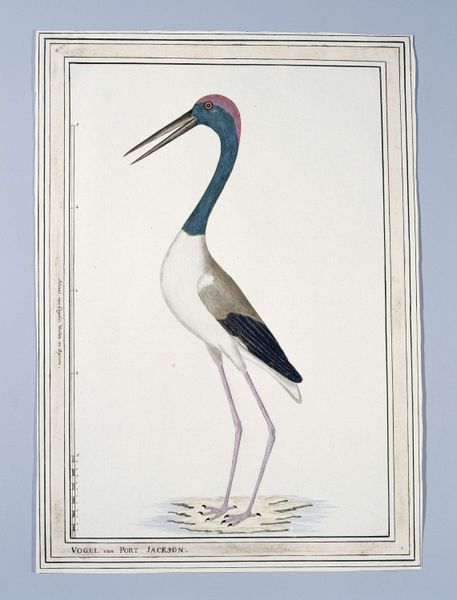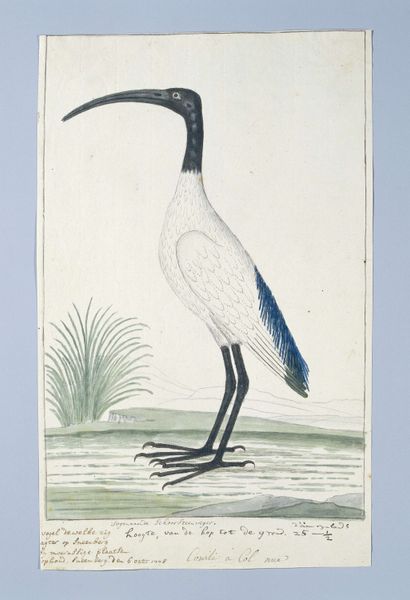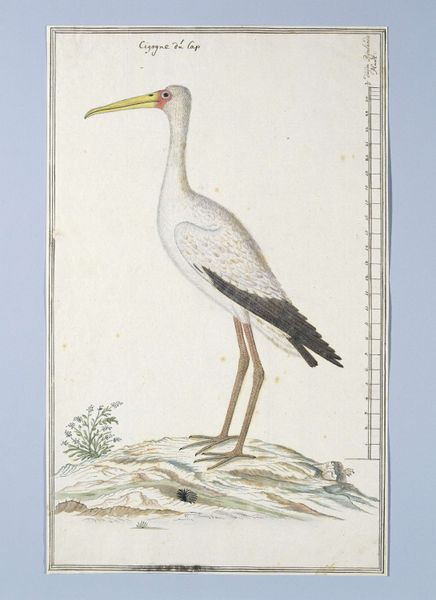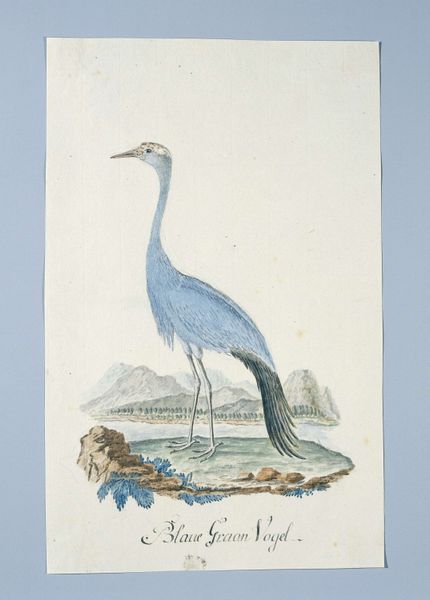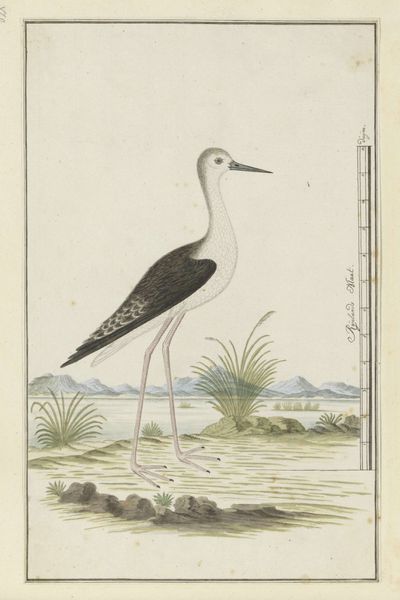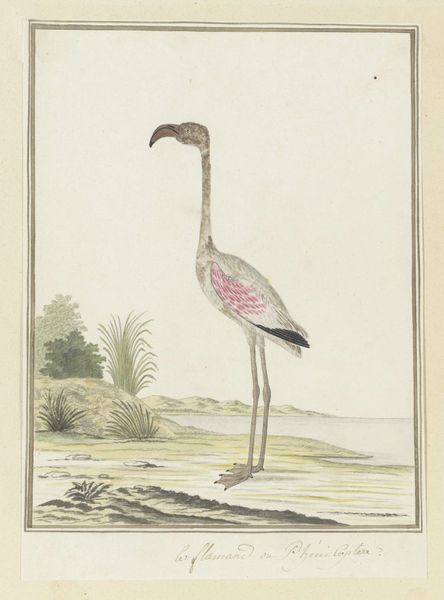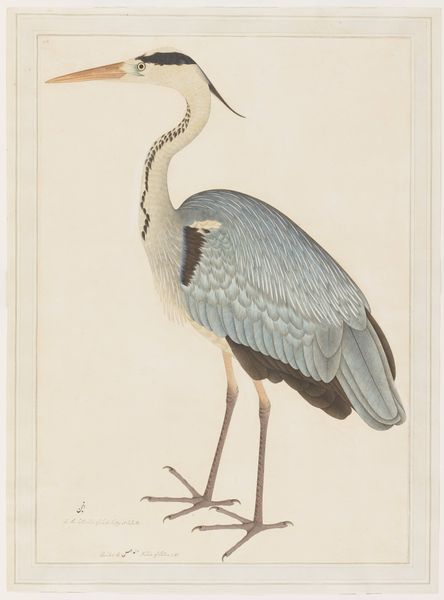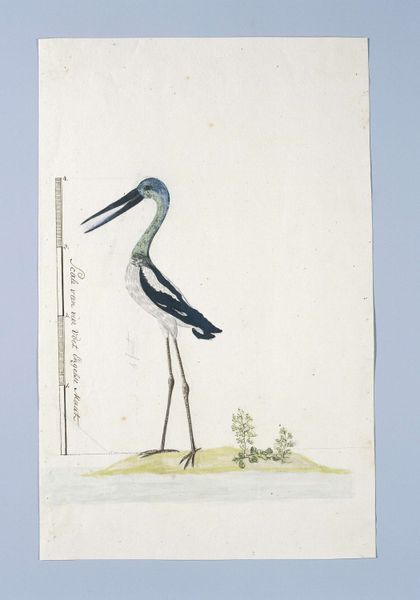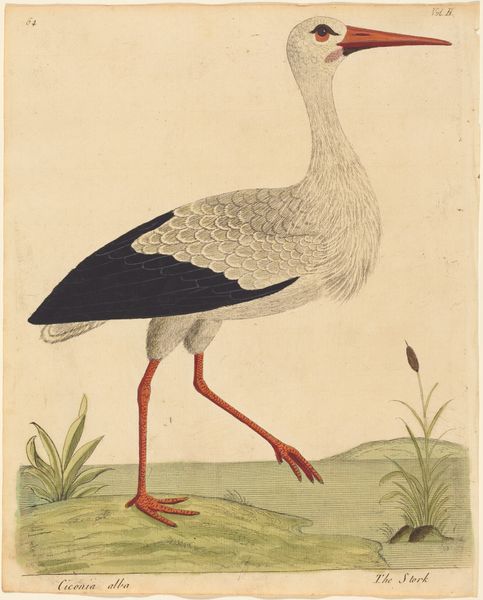
drawing, etching, paper, ink
#
portrait
#
drawing
#
dutch-golden-age
#
etching
#
paper
#
ink
#
line
#
academic-art
#
naturalism
#
realism
Dimensions: height 660 mm, width 480 mm, height 405 mm, width 244 mm, height 378 mm, width 226 mm
Copyright: Rijks Museum: Open Domain
Editor: Here we have Robert Jacob Gordon's drawing of "Ardea alba", or the Great Egret, possibly from the late 1770s or 80s, created with ink on paper. I'm immediately struck by how scientific and detailed the drawing is, yet the subject feels almost majestic. What do you see in this piece? Curator: It’s fascinating to consider this drawing within the context of colonial exploration. Gordon, a military officer in the Dutch East India Company, documented the natural world. How do his socio-political roles influence his representations, and who was his intended audience? Was it for scientific study, imperial record-keeping, or perhaps a blend of both? Editor: That’s a great point. I hadn't considered the colonial implications so directly. So the style of meticulous naturalism is also tied to these functions? Curator: Precisely. This level of detail and precision allowed him to classify and claim knowledge of the territory’s resources, presenting them within a visual framework that mirrored the dominant scientific thought of the time. Look, for instance, at the inclusion of measurement scales - how do these marks affect your view of the subject? Editor: They almost quantify nature, making it a resource to be measured and controlled. This certainly puts a different spin on what I initially perceived as simple beauty. Curator: The politics of imagery are subtle yet potent. Works like this provided the Dutch Republic with visual currency, contributing to the colonial project. Considering the broader historical impact helps us see how representations of nature become tools of power. What do you think, looking again, about the bird as the main character within this history? Editor: I think the history makes me question whether there are other viewpoints or agendas in naturalism, even if an artwork is celebrated for accuracy. Thanks, it's certainly given me a richer and much more complex picture. Curator: It's a process of continuous questioning. Thinking about these social and historical currents allows us to recognize the complex intersections of art, power, and knowledge.
Comments
No comments
Be the first to comment and join the conversation on the ultimate creative platform.
